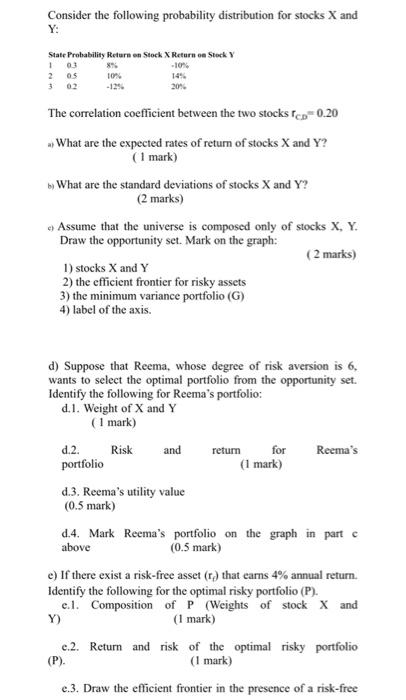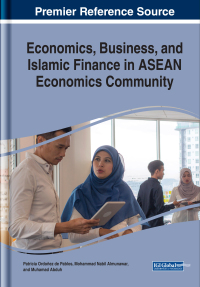Consider the following probability distribution for stocks X and Y: State Probability Return on Stock x Return on Stock 103 -10% 3 02 20% The correlation coefficient between the two stocks tcp 0.20 What are the expected rates of return of stocks X and Y? (1 mark) What are the standard deviations of stocks X and Y? (2 marks) Assume that the universe is composed only of stocks X, Y. Draw the opportunity set. Mark on the graph: (2 marks) 1) stocks X and Y 2) the efficient frontier for risky assets 3) the minimum variance portfolio (G) 4) label of the axis. d) Suppose that Reema, whose degree of risk aversion is 6, wants to select the optimal portfolio from the opportunity set. Identify the following for Reema's portfolio: d. 1. Weight of X and Y (1 mark) Risk and Reema's d. 2. portfolio retum for (1 mark) d.3. Reema's utility value (0.5 mark) d.4. Mark Reema's portfolio on the graph in parte above (0.5 mark) c) If there exist a risk-free asset (r) that earns 4% annual return. Identify the following for the optimal risky portfolio (P). el. Composition of p (Weights of stock and Y) (1 mark) e.2. Return and risk of the optimal risky portfolio (P). (1 mark) c.3. Draw the efficient frontier in the presence of a risk-free e.3. Draw the efficient frontier in the presence of a risk-free asset and mark portfolio P on the graph in partc above (0.5 mark) f) Reema now wants to invest in a complete portfolio. f.1. What proportion of investment should Reema invest in the optimal risky portfolio? Identify Weight of P, Weight of stocks X and Y, and weight of risk-free rate. (1 mark) f.2 What are the risk and return for Reema's complete portfolio? (1 mark) f.3 What is Reema's utility when investing in the complete portfolio? (0.5 mark) f.4 Comment on Reema's utility value in parts d.3 and f.3. (0.5 mark) f.3 Draw the indifference curve that maximises Reema's utility on the graph in part above. (0.5 mark) g) Rework parts d and f and show the location of Ahmad's complete portfolio in the graph in part C above if Ahmad has a degree of risk aversion of 2. (6 marks)








